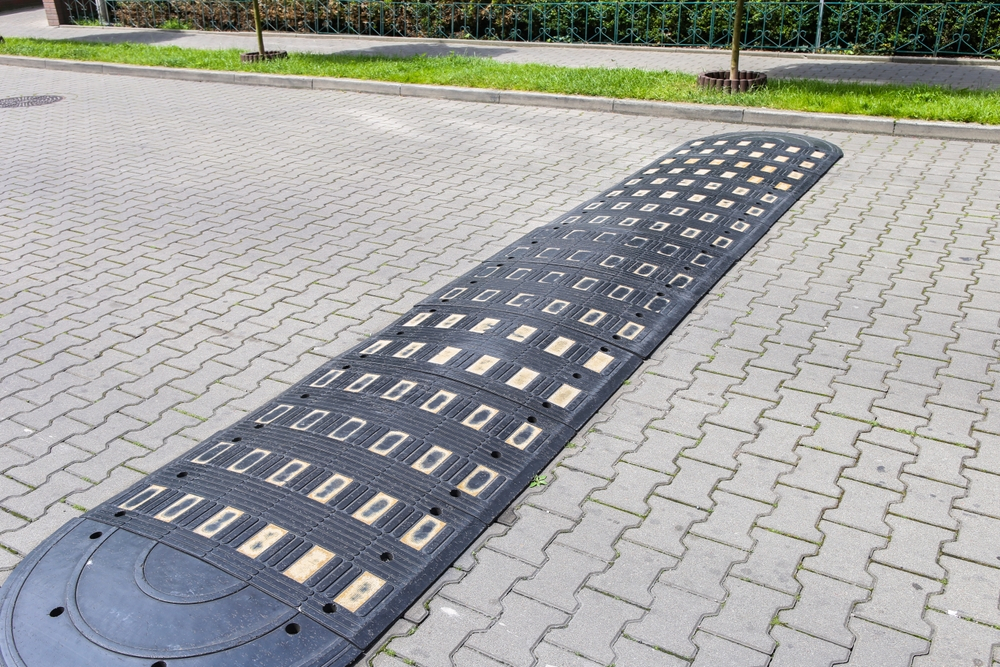Imagine struggling with your wheelchair at the entrance of a building, unable to access it because of a flight of stairs or a high curb. Frustrating, isn’t it? Welcome to the world of millions of wheelchair users who encounter such impediments in their daily lives. As a society, the question we ask ourselves is – are we doing enough to accommodate all individuals regardless of their physical abilities? While a universal solution to this may not yet be at hand, a significant stride in the right direction exists – welcome to the world of rubber ramps. Step-in (or wheel in, as the case may be) as we delve into this promising technology and explore how it is transforming the mobility space. This post will unwrap the functional and design merits of rubber ramps, dispel myths and misconceptions, examine their pros and cons, and address the nuances of choosing the right rubber ramp.
What is a Rubber Ramp?
A rubber ramp, a form of portable ramp, is a tool crafted from heavy-duty, slip-resistant rubber that aids in seamless mobility. Consisting of wedge-shaped pieces, its role provides a smooth and uninterrupted passage over obstacles such as stairs, thresholds or curbs. By creating a gentle slope, it offers easy maneuverability for wheelchairs, strollers, and walkers to traverse.
With the advent of rubber ramps, steps and uneven surfaces have evolved from a barrier into a navigable zone. It embodies the concept of ‘universal design,’ an approach that caters to all, irrespective of their mobility capabilities. Whether it’s a child with a bicycle, an elderly with a walker, or a physically challenged individual on a wheelchair, rubber ramps bring everyone onto a level playing field.
Interestingly, rubber ramp adoption is not restricted to households or public spaces alone. Businesses too have realized their utility, integrating them into their premises to ensure accessibility for all.
Why Choose Rubber Ramps?
Rubber ramps bring a host of advantages to the table. Firstly, their durability is unparalleled. Resistant to wear and tear, they can withstand adverse weather conditions without losing their functionality. Besides, they are cost-effective and eco-friendly, with many brands using recycled rubber in their production.
In terms of installation, these ramps are easy to fit, requiring no special skills or heavy machinery. Perhaps most significantly, they extend an olive branch to those with mobility challenges, increasing their independence and confidence by providing an avenue for easy access to places previously deemed inaccessible.
Despite these advantages, it is key to acknowledge that rubber ramps may not be perfect. There could be issues concerning the appropriate sizing or the ramp’s steepness that may pose a challenge to some. However, many brands today offer customization options, making these ramps fit for almost every situation.

Rubber Ramps
Tracing the Evolution of Rubber Ramps
The birth of rubber ramps dates back to the surge in acceptance and advocacy for disability rights. While there isn’t a definitive ‘Eureka’ moment in their history, their popularity and use have exponentially grown in recent times. This rise is reflective of a world growing keenly aware of its responsibilities towards the physically challenged, reinforcing the importance of inclusivity and equal access.
When Should You Opt for a Rubber Ramp?
The beauty of a rubber ramp lies in its versatility. They are a boon both for domestic use as well as for commercial establishments. An elderly member at home, a friend on a wheelchair visiting you, or even if you need an aid for moving heavy furniture – they come in handy. Similarly, in commercial areas like shops or offices, these ramps drive diversity, inclusivity, and convey your commitment to equal access opportunities.
Who Can Benefit from Rubber Ramps?
Rubber ramps can be a lifeline for the elderly, individuals with physical disabilities, and anyone using a mobility aid. Similarly, parents navigating the cityscape with a stroller, or children with bikes can find them useful. Essentially, they are crafted to assist everyone, symbolizing a more inclusive world.
The Pros and Cons of Rubber Ramps
Once fitted, rubber ramps offer a smooth, uninterrupted path over a gradient. The non-slip structure ensures safety while the durable rubber stands up to weather changes. They are easy to install and, when not in use, simple to store. The cost-effectiveness and eco-friendliness are simply the cherries on top.
Despite these pros, one cannot overlook some caveats. If not correctly sized, they can prove too steep or inappropriate for some users. Also, they may not be suitable for extreme gradients.
Conclusion
Rubber ramps stand as symbols of acceptance, empathy, and inclusivity in our society. They are testimony to the innovations aimed at inclusivity, championing seamless mobility for everyone. While they may have their flaws and may not be a universal fix, their impact is undeniable. As we continue to evolve towards a more accessible world, innovations like rubber ramps remind us of how far we’ve come and inspire us to keep striving for better, more inclusive design solutions. Just as these ramps help individuals overcome physical obstacles, they also help society surmount metaphorical ones, fostering an environment of acceptance and accessibility. It’s about time we embraced them wholeheartedly, for it is in this inclusivity that we discover the essence of being human. With this in mind, don’t let the steps stop you. Instead, ramp up your world with rubber ramps!
